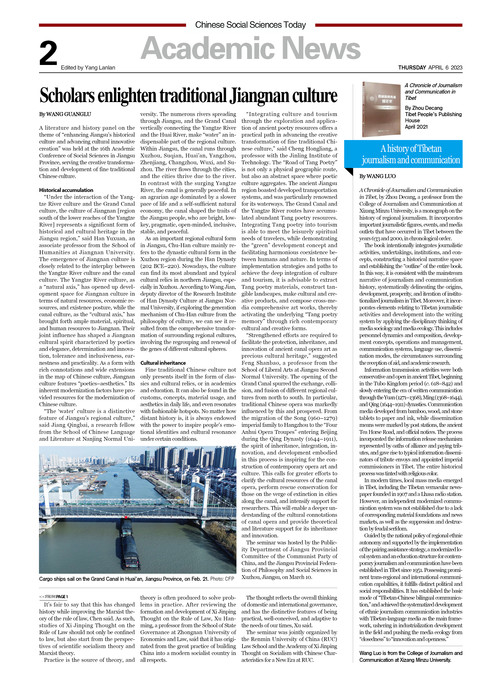A history of Tibetan journalism and communication
2023-04-06 11:00:34
A Chronicle of Journalism and Communication in Tibet
By WANG LUO
A Chronicle of Journalism and Communication in Tibet, by Zhou Decang, a professor from the College of Journalism and Communication at Xizang Minzu University, is a monograph on the history of regional journalism. It incorporates important journalistic figures, events, and media outlets that have occurred in Tibet between the years 633 and 2000, in chronological order.
The book intentionally integrates journalistic activities, undertakings, institutions, and concepts, constructing a historical narrative space and establishing the “outline” of the entire book. In this way, it is consistent with the mainstream narrative of journalism and communication history, systematically delineating the origins, development, prosperity, and iteration of institutionalized journalism in Tibet. Moreover, it incorporates elements relating to Tibetan journalistic activities and development into the writing system by applying the disciplinary thinking of media sociology and media ecology. This includes personnel dynamics and composition, development concepts, operations and management, communication systems, language use, dissemination modes, the circumstances surrounding the reception of aid, and academic research.
Information transmission activities were both conservative and open in ancient Tibet, beginning in the Tubo Kingdom period (c. 618–842) and slowly entering the era of written communication through the Yuan (1271–1368), Ming (1368–1644), and Qing (1644–1911) dynasties. Communication media developed from bamboo, wood, and stone tablets to paper and ink, while dissemination means were marked by post stations, the ancient Tea Horse Road, and official notices. The process incorporated the information release mechanism represented by oaths of alliance and paying tributes, and gave rise to typical information disseminators of tribute envoys and appointed imperial commissioners in Tibet. The entire historical process was tinted with religious color.
In modern times, local mass media emerged in Tibet, including the Tibetan vernacular newspaper founded in 1907 and a Lhasa radio station. However, an independent modernized communication system was not established due to a lack of corresponding material foundations and news markets, as well as the suppression and destruction by feudal serfdom.
Guided by the national policy of regional ethnic autonomy and supported by the implementation of the pairing assistance strategy, a modernized local system and an education structure for contemporary journalism and communication have been established in Tibet since 1951. Possessing prominent trans-regional and international communication capabilities, it fulfills distinct political and social responsibilities. It has established the basic mode of “Tibetan-Chinese bilingual communication,” and achieved the systematized development of ethnic journalism communication industries with Tibetan-language media as the main framework, ushering in industrialization development in the field and pushing the media ecology from “closedness” to “innovation and openness.”
Wang Luo is from the College of Journalism and Communication at Xizang Minzu University.


